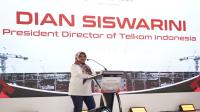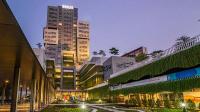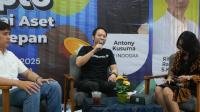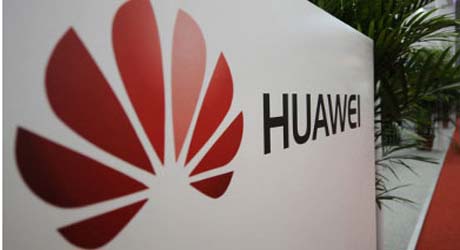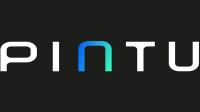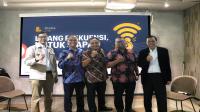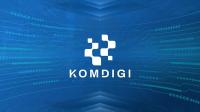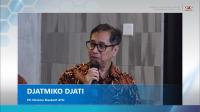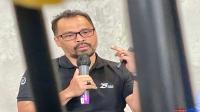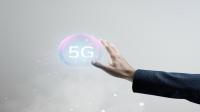Unleashing 5G potentials to propel Indonesian digital transformation
08:16:00 | 08 Feb 2022
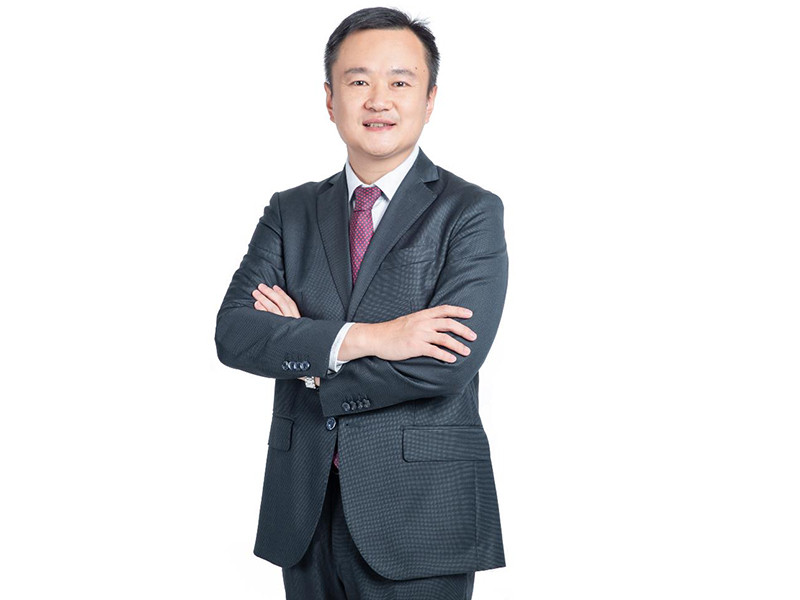
Alex Xing, Chief Technology Officer Huawei Indonesia.
Indonesia is gearing up to host the prestigious annual Group of 20 (G20) summit that culminates on October 30, 2022. With “Recover Together, Recover Stronger” as the summit’s unifying message, President Joko Widodo intends to focus on digital transformation of the economy, renewable energy, inclusive healthcare on a global scale, and recovering from the effects of the pandemic. And 5G technology is the key for these developments.
As circumstances forced people to remain indoors, contactless, and remote working became the new normal. Over a very short span of time, digital transformation across industries accelerated through the deployment of digital technologies impacting people’s daily lives, industrial productivity, and government outreach while ensuring a swift return to economic growth. Digital innovation is essential to boost social and economic recovery now and growth in the future.
5G technologies are the key pillar infrastructure of industry digitalization and helped realize many use cases that have helped us through the pandemic. The benefits of 5G have been enjoyed by a diverse range of industries, from the obvious practical applications to the incredible success stories in healthcare, education, logistics, manufacturing, and the list of areas in which 5G has had a positive impact keeps on growing.
5G is a key infrastructure for the Development of Indonesia Digital Economy
President Joko Widodo has affirmed multiple times that Indonesia’s digital economy indeed has huge potential, with growth reaching US$40 billion, $47 billion and $70 billion, respectively from 2019 to 2021. “We expect to reach $146 billion by 2025. So, [the potential of Indonesia’s digital economy] is enormous,” the President was quoted in a year-end statement.
Coupled with Indonesia’s digital economy roadmap, known as Industry 4.0, the industrial sector is being pushed and encouraged to embrace digitalization that is being empowered by technologies such as 5G and cloud.
5G delivers increased bandwidth, higher reliability, and lower latency. While 4G networks demonstrated a variety of use cases in its ability to connect people, enterprises and industry, 5G will bring greater scalability, enhanced security and greater efficiency on the new and existing connectivity layers. The adoption of 5G will power up businesses to fully harness the capabilities of advanced data-driven technologies such as IoT, artificial intelligence (AI), and machine learning.
The GDP of Indonesia is over US$1 trillion, making it the largest economy in the region. The economy is on track to continue its rapid growth, especially now that digital transformation is being prioritized in national policy. Manufacturing, agriculture, trade, construction, and mining are the largest contributors, making up 64.85 percent of Indonesia's GDP in the second quarter of 2021, and all are showing steady growth.
Manufacturing, the central pillar of Indonesia’s economy, also needs to harness the power of technologies, including 5G and Cloud, in order to streamline itself and make the transition to Industry 4.0, ensuring Indonesia’s place as one of the world’s top digital economies. The manufacturing sector can utilize 5G-supported technologies & solutions, such as smart manufacturing control, and machine vision, to lower operational costs, promote production efficiency, and enhance safety. Combination across multiple next-gen technology applications has also led to some breakthroughs and innovations to future-ready and sustainable industries and businesses.
As a country blessed with a wealth of natural resources – including an ample supply of coal, placing Indonesia in the fourth rank worldwide, as well as crude oil and natural gas, placing Indonesia in the second and third ranks in Asia Pacific, respectively – mining is another industry for which 5G is proving to be a game-changer. 5G-enabled remote mining, for example, may reduce the need to have workers doing dangerous work in shafts and quarries, resulting in a safer working environment for many in the mining industry.
Last but not least, healthcare has unquestionably been one of the most disrupted industries during the pandemic. Healthcare providers, in particular, have responded to the pandemic by innovating at an unprecedented rate. At present, Indonesia's healthcare resources are distributed unevenly across the country. 5G technology makes it possible to democratize healthcare with telemedicine and even exciting, revolutionary use cases such as remote surgery. A patient living in a remote area can now receive the same treatment as a patient living in a big city.
These are just some examples of industry-specific use cases where 5G is rapidly revolutionizing “business as usual.” PwC estimates that 5G could drive US$13.2 trillion worth of growth in the global economy by 2035, plus creating 22.3 million jobs. And, in Indonesia, it is projected that 5G-driven businesses and services could contribute around IDR2,800 billion to the economy by 2030, or equivalent to 9.5 percent of national GDP. In the process, this tremendous growth will make Indonesia ASEAN’s digital center and hub.
5G and cloud rapid development may become the springboard for economic recovery
5G infrastructure development has increasingly been prioritized in the core national strategies and roadmaps of South Korea, China, and many European nations. In countries including Australia, Singapore, and Malaysia, large-scale development projects have been fast tracked through budget allocations. The G20 summit is a good opportunity for world leaders to gather and discuss further on how 5G technology can be implemented to combat existing challenges and even ensure readiness for black swan events like the pandemic.
Neighboring countries in ASEAN are also actively exploring how 5G can enable the transformation of industries. In Thailand, for example, a national 5G committee has been established with the aim of facilitating 5G deployment through policies and incentive plans. The government has also followed up with even more concrete initiatives, such as a 5G ecosystem innovation center, and a 5G-based smart hospital.
In Indonesia, the pandemic did not prevent telecom industry stakeholders from creating breakthroughs that enable people and society to benefit from the transformative potential of ICT.
Since early last year, Telkomsel, XL Axiata, and Indosat Ooredoo (later known as Indosat Ooredoo Hutchison following the merger between Indosat and Tri) are the three operators that have rolled out 5G for commercial use. Furthermore, Telkomsel is exploring the application of 5G in the mining and agriculture sectors, while XL Axiata has partnered with research institutions to establish a 5G-powered IoT platform in order to meet the needs of the businesses, especially in agriculture and manufacturing.
In the big picture, exploration of the possibilities of 5G for businesses has yielded tangible results across the globe. Several major industries have marched toward breakthroughs in terms of scale deployment. In 2020, 20+ industries, including mining, port management, steel making, and manufacturing, have seen the signing of more than 1,000 contracts for major 5G-based digital transformations, worth a total of US$1.2 billion. Industry-specific application of 5G combined with at-scale deployment can improve production efficiency, with key areas such as remote control, machine vision, and positioning proving especially fruitful.
The digital world of today has brought more intelligence to every industry. The high-speed connectivity of 5G represents one of key technologies making that possible, and the cloud represents the elastic and near-unlimited compute and storage capability sitting at the other end of those connections. The cloud provides intelligent solutions that can be provided as a service, readily available and accessible to every organization and individual. Intelligent cloud services are becoming a basic utility, just like running water and electricity.
Together, both 5G and cloud form the two wings of Indonesia's digital machinery, carrying Indonesia to the highest heights in this intelligent era. Moreover, Huawei has unveiled plans to establish a cloud node in Indonesia by the middle of this year. This will add to the momentum of Indonesia's digital economy, as it will amplify advantages and values of 5G and Cloud.
Huawei’s consistent and robust investments in R&D for 5G ecosystem developments
Huawei’s research into 5G began all the way back in 2009. Since then, Huawei has invested over $4 billion into 5G R&D efforts. Huawei has also been powering up the 5G networks across the globe. According to the Global 5G Benchmark Report by Ookla in August 2021, 10 major cities were selected to compare their operators’ 5G network performance and 5G Availability, including Seoul, Bangkok, Zurich, Madrid, Berlin, --- for the median download speed comparison--- all the operators which chose Huawei as their 5G vendor ranked No.1 among all the 10 cities.
However, 5G is not only about how fast it is. Speaking of energy conservation and emissions reductions, Huawei’s 5G power uses AI and other techniques to provide a unified power supply platform for all scenarios. It does not only support higher power module efficiency, but it can also reduce secondary losses by boosting voltage, increasing end-to-end energy efficiency by 3 percent and helping increase site energy efficiency by 5 percent. These all combined will in turn enable operators build and operate 5G networks faster, more economically and more easily. As some figures might speak louder, Huawei’s 5G power can reduce reconstruction costs per site by more than US$1,831, conserve 4,130 kWh of electricity per site per year, and slash carbon emissions by 1,125 kg per site per year.
In related developments in October last year, new release of Huawei’s 64T64R MetaAAU – a comprehensive 5G solution – provides the ideal solution to improve both network performance and energy efficiency using innovative hardware and software to feature the product’s advantages in terms of user experience at reduced energy costs. Hardware-wise, MetaAAU doubles antenna elements to 384 from that of a conventional AAU (192) in its enabled extremely large antenna array (ELAA). ELAA is combined with ultra-light integrated array and signal direct injection feeding (SDIF) to improve both coverage and integration. Speaking of significantly improved user experience and bigger cell capacity, MetaAAU features software using the Adaptive High Resolution (AHR) turbo algorithm to provide precise, dynamic and targeted beamforming. This combination of hardware and software leads to innovation in Massive MIMO coverage and energy saving in which MetaAAU upgrades coverage by 3 dB and 6dB and user experience metrics by 30% and 60% respectively as against predecessors 64T64R AAU and 32T32R AAU. MetaAAU is also a powerful energy-saving tool that allows base stations to achieve the same level of coverage for cell-edge users but with a lower transmit power, reducing energy consumption by approximately 30% over conventional AAUs.
Indeed, the 5G ecosystem is maturing quickly. This fast growth of 5G is also changing user requirements — demanding a better, uninterrupted experience. At the same time, the push toward carbon neutrality speeds up the adoption of more environmentally-friendly products and solutions by the industry.
Huawei and contribution to People, the key factor in 5G ecosystem equation
At Huawei, we think of ourselves as more than a solutions provider. At the end of the day, regardless of how advanced a solution may be, success still depends on the most critical factor of all: the people factor. That’s why we’re working with government, academia, industry, communities, and other stakeholders to develop the people behind the system and ecosystem. Such quad-helix collaborations are evinced by Huawei’s I Do commitments for the development of the digital ecosystem in Indonesia.
In 2020, through ‘I Do Contribute’ commitment, Huawei reaffirmed its strong presence for more than 22 years in Indonesia, to set 5-year target of cultivating 100 thousands Indonesian digital talents. Plethora of programs, lessons, initiatives have been launched, from 5G, AI, Cloud training courses, Innovation Day, TechDay, ICT Competition, to Seeds for the Future program, to achieve more than halfway of the target, or over than 52 thousand talents only within 14 months.
Huawei also laid solid infrastructure to ensure talent development keep going well with the establishment of the Huawei ASEAN Academy Engineering Institute. The facility is the most equipped in Asia Pacific, featuring a thousand trainers, over 3,000 training lessons, and over 100 environments.
What's more, in the exciting world of startups, Huawei has announced its plan to invest US$100 million in the Asia Pacific region through its Spark Program, a startup incubator created with the goal of building a sustainable startup ecosystem in the Asia Pacific region over the next three years.
Keeping up the momentum for building a fully connected, 5G-oriented, and green Indonesia
There is no doubt 5G will usher in a new era of prosperity for the world as well as for Indonesia, and will be the key infrastructure of Indonesia’s digital economic transformation.
As things stand, Indonesia still has a lot to do. For example, Indonesia’s national mobile broadband speed was rated at 23.12 Mbps as of October 2021. There’s great potential for Indonesia to enhance its network quality. To fulfill this huge potential, Indonesia needs to accelerate spectrum release and network infrastructure construction. Indonesia also has to broaden and strengthen its industrial policies as outlined by the Industry 4.0 roadmap, as well as consolidate its ecosystem of stakeholders in order to fully capture and democratize the power of 5G.
The combination of a 5G- and cloud-enabled digital transformation of the economy, coupled with green energy development, presents our future with incredible opportunities that will benefit everyone and further build a fully connected, 5G-oriented, more intelligent, digital, and green Indonesia together.
Written by : Alex Xing, Chief Technology Officer Huawei Indonesia
Baca juga :
•
•
•
Artikel Terkait
-
 English Ver. - 04:06:00 | 25 Aug 2025The collaboration is designed to simplify complex payment processes for global travel businesses
English Ver. - 04:06:00 | 25 Aug 2025The collaboration is designed to simplify complex payment processes for global travel businesses -
 English Ver. - 04:07:00 | 11 Aug 2025Wireless Logic has completed the acquisition of Zipit Wireless
English Ver. - 04:07:00 | 11 Aug 2025Wireless Logic has completed the acquisition of Zipit Wireless -
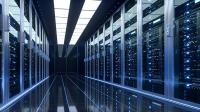 English Ver. - 05:00:00 | 27 Jul 2025JLL’s involvement included identifying and securing a site that met DAMAC’s technical and strategic requirements
English Ver. - 05:00:00 | 27 Jul 2025JLL’s involvement included identifying and securing a site that met DAMAC’s technical and strategic requirements
Rekomendasi
Berita Pilihan
More Stories
PR Newswire








.jpeg)
